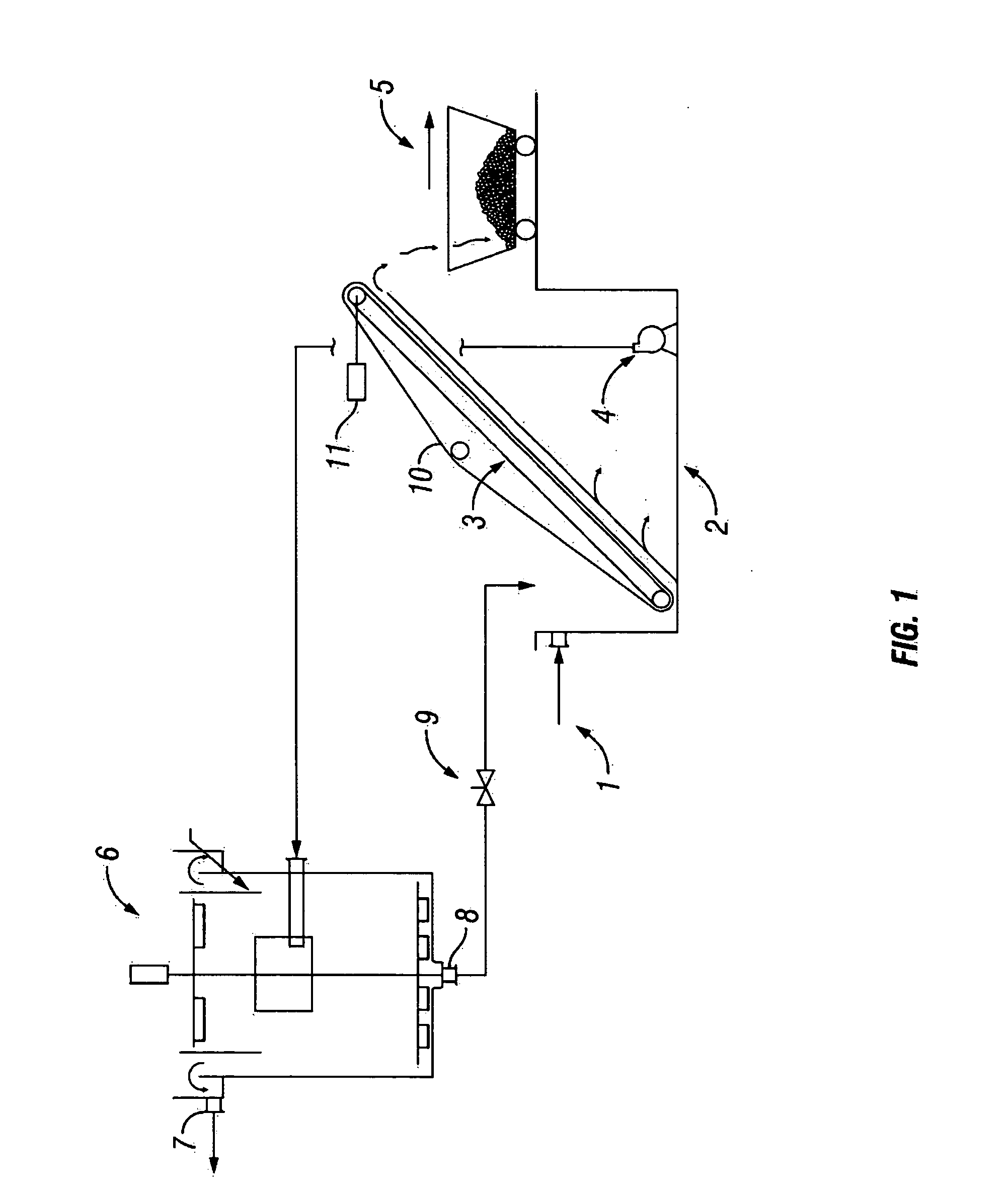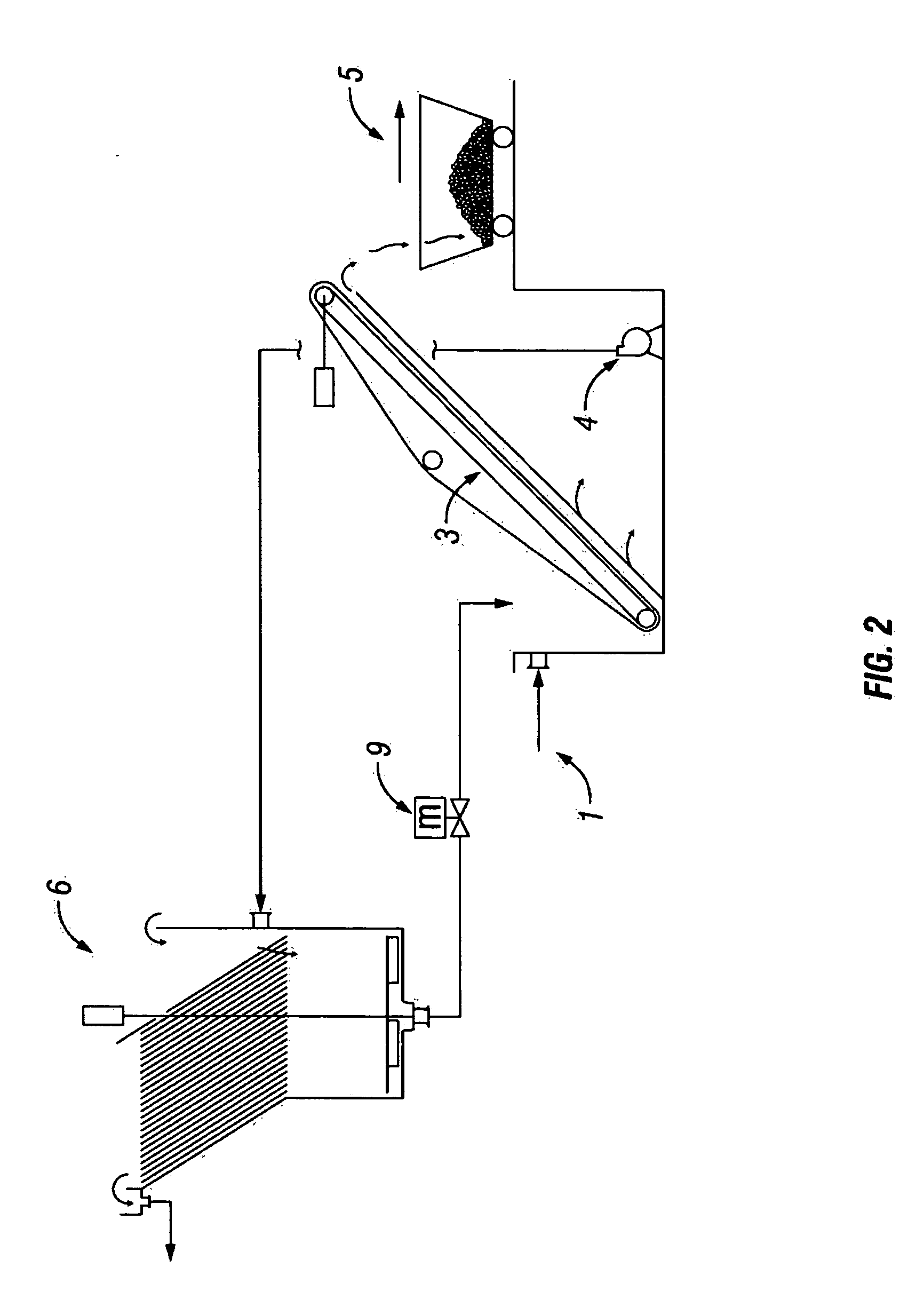Method and apparatus for treating animal waste and wastewater
a technology for animal waste and wastewater, applied in the field of animal waste and wastewater treatment methods, can solve the problems of large quantities insignificant environmental impact of hog excretion, and large amount of hog manure on land
- Summary
- Abstract
- Description
- Claims
- Application Information
AI Technical Summary
Problems solved by technology
Method used
Image
Examples
Embodiment Construction
[0055] For purposes of the description of this invention, the terms “upper”, “lower”, “right”, “left”, “vertical”, “horizontal”, “top”, “bottom”, and other related terms shall be defined as to relation of embodiments of the present invention as it is shown an illustrated in the accompanying Figures. Further, for purposes of the description of this invention, the terms “upper portion,”“lower portion,”“top,”“bottom,” and the like shall be defined to mean an upper portion and a lower portion and not specific sections. The terms “upstream” and “downstream” are intended to describe the connected relationship of the wastewater treatment modalities of the present invention, and are not intended to imply altitudinal or transformational relationship of the treatment modalities or the wastewater therein. However, it is to be understood that the invention may assume various alternative structures and processes and still be within the scope and meaning of this disclosure. Further, it is to be u...
PUM
| Property | Measurement | Unit |
|---|---|---|
| Temperature | aaaaa | aaaaa |
| Permeability | aaaaa | aaaaa |
| Surface area | aaaaa | aaaaa |
Abstract
Description
Claims
Application Information
 Login to View More
Login to View More - R&D
- Intellectual Property
- Life Sciences
- Materials
- Tech Scout
- Unparalleled Data Quality
- Higher Quality Content
- 60% Fewer Hallucinations
Browse by: Latest US Patents, China's latest patents, Technical Efficacy Thesaurus, Application Domain, Technology Topic, Popular Technical Reports.
© 2025 PatSnap. All rights reserved.Legal|Privacy policy|Modern Slavery Act Transparency Statement|Sitemap|About US| Contact US: help@patsnap.com



